Peony Coral sunset
Among peonies, the coral series has recently been of particular interest for flower growers. It is made up of interspecific hybrids with an unusually attractive color of inflorescences. This group also includes the Coral Sunset variety, which has gained popularity among our compatriots. Let's find out more about him.
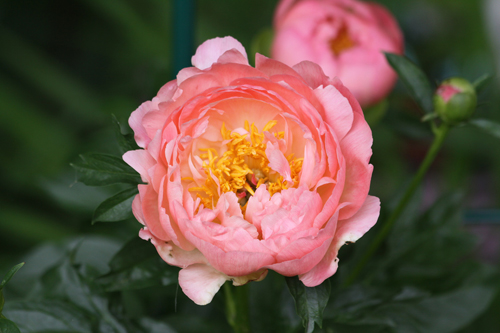
History of appearance
Coral sunset embodies the successful combination of treelike and herbaceous traits. Two breeders did a lot for its appearance: American Samuel Wissing and Canadian Leman Cousins. But the great merit in this work still belongs to the first scientist, since it is he who is the direct author of Coral Sunset. He spent 26 years creating a noble culture. The world learned about the peony variety, whose name is translated from English as "coral sunset", in 1965, and the flower's popularity has not diminished to this day - both among professionals and among novice florists. Over the years, this culture has been a participant in various competitions, where it received high awards and titles not only for its magnificent appearance, but also for its unpretentiousness, as well as resistance to cold weather.
Description of the variety
Coral Sunset is a perennial powerful compact shrub up to 110 cm high. It has strong, sturdy stems that rise about 15 cm above the green mass. Peony leaves have a rich green hue. The diameter of the crown of the bush is 0.8-0.9 meters. At the top of each shoot, one large flower is formed, the width of which varies from 15 to 20 cm. The petals in a blossoming bud are arranged in 5-7 rows. Coral sunset has semi-double flowers, rich coral shade. In the middle, the inflorescence is lighter, while the tips of the petals are somewhat darker. At the beginning of flowering, the buds are colored in pink-peach tones. It is noteworthy that the flower petals are mostly bent towards the center, but they do not cover the core. The cup-shaped flowers are very fragrant. Their fragrance can be described as delicate and sophisticated.

The peony blooms in early June. This period lasts for 1-1.5 months. But know that the shrub does not become abundantly flowering immediately, but only in the third year of life, and even then with strict adherence to the rules of care. Coral Sunset is a winter-hardy species. Its roots do not die even in Siberian frosts, however, in the presence of sufficient snow cover. If you adhere to the recommended cultivation principles, you can significantly reduce the risk of developing diseases and attacks of insect pests on it.
Agrotechnical features
To place shrubs, you should choose a well-lit area, protected from gusty winds. It is better not to plant it in the shade, otherwise you will not wait for the abundant flowering of the peony. If you decide to grow a crop next to a garden fence, do not forget to maintain the distance between the bush and the structure for the full development of the plant.
Coral Sunset loves fertile, loose soil. The best option is to plant the flower in light loamy soil. When planting a crop in ordinary garden soil, it must first be fertilized with humus (2 parts), and also add sand (1 part) and sod soil (2 parts) to the substrate. This mixture is poured into a pit about 50 cm deep. The plant is planted at the end of summer or the first half of the autumn period. This allows the culture to better take root in a new place. When planted in spring, Coral sunset will suffer more from the summer heat.
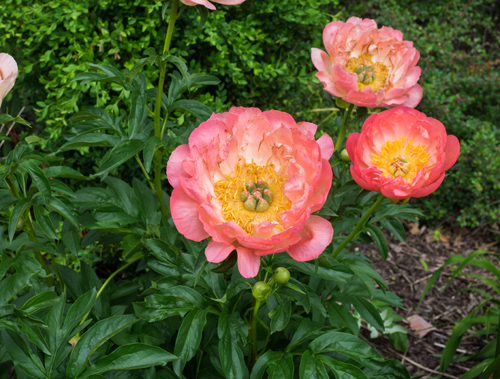
The peony needs to be watered with enviable regularity: young specimens more often, adults less often. Moistening the soil under the flower should always be abundant and carried out with soft water at room temperature in the amount of 1-2 buckets per bush. Avoid drying out the soil. After watering, the area of the near-trunk circle must be carefully loosened. Soil mulching is necessary only in the fall, before the onset of the dormant period. Mulch is straw or dried grass.With the onset of spring, it is removed from under the bush.
In the first year of life, Coral Sunset is not allowed to bloom. Only tiny buds that have tied up should be plucked out. This measure contributes to the formation of a powerful root system. In the middle or late spring, in order to accelerate the growth of adventitious roots, the peony is watered with water with a root stimulant dissolved in it.
In the process of caring for young and adult bushes, systematic weeding is important. From the third year of life, the soil under the plant begins to be fertilized. Mineral complexes containing phosphorus and potassium are suitable for feeding. They are brought under the shrub during the budding period and three weeks after the end of flowering. The frequency of this event: 1-2 times a month.
When the first autumn frosts make themselves felt, the fallen shoots with leaves are carefully cut off, leaving only a low stump. The onset of stable cold weather is a signal to mulch the area around the plant with compost or sawdust. Covering Coral sunset for the winter is optional.
The appearance of powdery mildew, gray rot and curliness on the bush is likely. Treatment of the plant with a solution of any fungicide will cope with them. Among insects, Coral Sunset is loved by nematodes that can damage any part of the peony. The variety will relieve them of the insecticide. It is advisable to carry out preventive spraying 2-3 times per season.
Use cases
A noble plant will favorably emphasize the beauty of a flower garden or garden plot if you place it in group compositions with other peonies or other flowering perennials that have the same shoot height as our hero. The variety is appropriate in mixborders, in ensembles with decorative leafy crops. It can also be planted with a single bush. Coral Sunset goes well with low-growing conifers and evergreens, as well as roses and clematis. From shoots with coral flowers delightful bouquets are obtained.

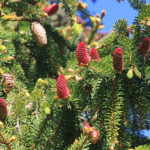
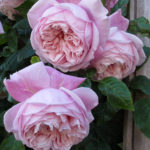
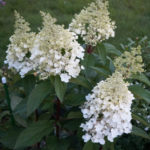

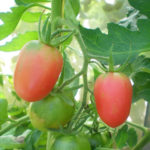



The bush of autumn planting with 2 - 3 buds in spring gave abundant growth and one signal bud. Shaded the first year, so that it grows root and does not evaporate moisture through the leaves. A year later, 4 - 5 flowers bloomed, plucked lateral buds for a larger size. The bush is large, but does not disintegrate, the peduncles rise by 10 - 15 cm, do not slope, do not suffer from rains and watering (they fall under the sprinklers on the edge of my lawn). Fertilizers - 2 times a year, complex spring and autumn. During the flowering period, once I water it with fertilizers for petunias - the flowers last longer.